Based on our vast experience with EASA PART 66 examination questions and question databanks, we have prepared a practice example of questions with explanations to practice for your next exam.
Disclaimer: This questions are for training purposes only! They are in no way appearing on Suntech’s’ controlled examination sessions.
At the end of the questions you are most welcome to comment, debate and ask questions.
Module 15 – Propulsion
- Who is credited with creating the earliest known device that demonstrated the principles of jet propulsion, typically described as a steam-driven toy?
- A. Sir Isaac Newton
- B. Giovanni Branca
- C. Hero of Alexandria
Correct Answer: C. Hero of Alexandria
Explanation: In 120 BC, the Greek engineer Hero created the ‘aeolipile’, a steam-powered device that rotated due to reaction jets, marking the first known example of jet propulsion.
- The jet propulsion concept patented by René Lorin in 1913 closely resembles which modern type of engine?
- A. A Ram-Jet
- B. A Turboprop Engine
- C. A Rocket Engine
Correct Answer: A. A Ram-Jet
Explanation: Lorin’s patent was for an ‘aero-thermodynamic-duct’ (athodyd), which had no moving parts and relied on forward speed for compression, effectively describing the modern Ram-Jet.
- While a piston engine generates thrust by moving a large mass of air at low velocity, how does a jet engine generate thrust?
- A. By driving a constant-speed propeller blade
- B. By accelerating a relatively small mass of air to a very high velocity
- C. By compressing a large air mass while maintaining constant volume
Correct Answer: B. By accelerating a relatively small mass of air to a very high velocity
Explanation: Jet propulsion relies on Newton’s laws, producing thrust by imparting a large acceleration (high velocity change) to a smaller mass of air compared to a propeller.
- Why is the APU (Auxiliary Power Unit) designated as auxiliary?
- A. Because it is not the primary source of propulsion or power for the aircraft during normal flight
- B. Because it is deployed only during in-flight emergencies
- C. Because it supplies pneumatic power exclusively
Correct Answer: A. Because it is not the primary source of propulsion or power for the aircraft during normal flight
Explanation: The APU supplements the main engines. It is ‘auxiliary’ because the main engines are the primary source of power and propulsion; the APU is a secondary, self-contained unit.
- What are the two primary energy outputs supplied by an aircraft APU?
- A. Fuel pressure and landing gear actuation
- B. Hydraulic pressure and engine liquid cooling
- C. Electrical power and pneumatic (bleed) air
Correct Answer: C. Electrical power and pneumatic (bleed) air
Explanation: The APU is designed to drive an electrical generator and provide bleed air for air conditioning and main engine starting.
- In an APU design featuring a load compressor, what components are typically mounted on and driven by the accessory gearbox?
- A. The main fuel pump and the battery
- B. The electrical generator and the cooling fan/load compressor drive
- C. The ignition exciters and the starter motor
Correct Answer: B. The electrical generator and the cooling fan/load compressor drive
Explanation: The accessory gearbox is the interface for driven units. Typically, it houses the electrical generator and the drive mechanism for the separate load compressor.
- What specific issue occurred in early APU designs (non-load compressor types) when bleed air was extracted directly from the main gas generator compressor?
- A. It reduced the airflow available for turbine cooling, leading to reduced turbine life
- B. It caused severe vibration in the aircraft tail cone
- C. It increased the risk of Foreign Object Damage (FOD) ingestion
Correct Answer: A. It reduced the airflow available for turbine cooling, leading to reduced turbine life
Explanation: Taking air from the core compressor meant less air passed through to the combustion and turbine sections. This reduction in mass flow reduced the cooling efficiency for the turbine blades, shortening their lifespan.
- How are valve timing and ignition events measured and specified in a four-stroke reciprocating engine?
- A. In millimeters of valve lift
- B. In linear inches of piston travel
- C. In degrees of crankshaft rotation
Correct Answer: C. In degrees of crankshaft rotation
Explanation: All timing events (valve opening/closing, spark firing) are referenced to the rotational position of the crankshaft (e.g., 10 degrees Before Top Dead Center).
- What physical principle causes the fuel/air mixture to enter the cylinder during the intake stroke?
- A. High pressure pulses from the exhaust manifold
- B. The piston moving downwards creates a low-pressure area, and higher atmospheric pressure forces the mixture in
- C. The exhaust valve opening at Top Dead Center
Correct Answer: B. The piston moving downwards creates a low-pressure area, and higher atmospheric pressure forces the mixture in
Explanation: The engine is an air pump. As the piston descends, it increases the cylinder volume, lowering the pressure. The higher ambient pressure outside forces air through the carburetor/intake into the cylinder.
- In an All-Electric (AE) propulsion architecture, what is the source of energy for the electric motors driving the fans?
- A. High-capacity batteries
- B. A reduction gearbox system
- C. A gas turbine driving a generator
Correct Answer: A. High-capacity batteries
Explanation: The definition of an All-Electric system is that it relies entirely on stored electrical energy (batteries) rather than converting chemical fuel into electricity on board.
- In a Series Hybrid-Electric (HE) propulsion system, what primarily generates the electricity for the propulsion motor?
- A. A Solid Oxide Fuel Cell operating at high temperatures
- B. A bank of stored battery energy only
- C. A combustion turbine engine driving an electrical generator
Correct Answer: C. A combustion turbine engine driving an electrical generator
Explanation: In a ‘Series’ hybrid, a fuel-burning engine turns a generator. This generator provides the electricity to the motors that actually drive the propellers/fans. The engine does not drive the propulsor directly.
- In a Parallel Hybrid-Electric (HE) propulsion system, what is the function of the gas turbine engine?
- A. It acts solely as a generator drive with no mechanical connection to the propeller
- B. It provides mechanical propulsive force directly and also generates electricity via a generator
- C. It serves only as an emergency backup if the electric motors fail
Correct Answer: B. It provides mechanical propulsive force directly and also generates electricity via a generator
Explanation: In a ‘Parallel’ hybrid, both the electric motor and the combustion engine are mechanically connected to the driveshaft/propulsor and can provide thrust simultaneously.
- Why is the conversion of existing aircraft to All-Electric (AE) propulsion currently a prevalent development strategy?
- A. It is the most straightforward method to adapt existing airframes to electric power technology
- B. Because AE systems are already suitable for large, long-haul airliners
- C. Because AE batteries offer higher overall efficiency than hybrid systems
Correct Answer: A. It is the most straightforward method to adapt existing airframes to electric power technology
Explanation: Retrofitting existing airframes with electric motors and batteries (AE) is technically less complex than designing completely new hybrid architectures, making it a common starting point for development.
- What is the core purpose of a FADEC (Full Authority Digital Engine Control) system?
- A. To control engine thrust based solely on outside air temperature
- B. To provide a physical linkage for fuel control
- C. To digitally monitor engine parameters and automatically adjust the fuel control unit for maximum efficiency
Correct Answer: C. To digitally monitor engine parameters and automatically adjust the fuel control unit for maximum efficiency
Explanation: FADEC takes multiple sensor inputs and uses a computer to precisely schedule fuel flow and other parameters, optimizing engine performance without direct mechanical linkage from the pilot.
- In an older Engine Electronic Control (EEC) system (pre-FADEC), what component retains primary control over fuel scheduling?
- A. The digital FADEC computer
- B. A Hydro-Mechanical Unit (HMU) linked mechanically to the cockpit levers
- C. The central Air Data Computer (ADC)
Correct Answer: B. A Hydro-Mechanical Unit (HMU) linked mechanically to the cockpit levers
Explanation: In supervisory EEC systems, the main control is still a traditional hydro-mechanical governor. The electronic part only “supervises” or trims the output; it does not have full authority.
- An Engine Supervisory Control (ESC) system monitors which key parameters to compare against a datum from the Air Data Computer?
- A. N1 (Fan Speed), EGT (Exhaust Gas Temp), and EPR (Engine Pressure Ratio)
- B. Fuel Flow, TLA, and TAT
- C. ITT, N2, and TLA
Correct Answer: A. N1 (Fan Speed), EGT (Exhaust Gas Temp), and EPR (Engine Pressure Ratio)
Explanation: The ESC ensures the engine stays within limits by monitoring the primary thrust setting parameters (N1 or EPR) and temperature (EGT) and comparing them to the optimal targets calculated from air data.
- What is the fundamental objective of cockpit engine instrumentation?
- A. To perform automatic system corrections
- B. To provide the pilot with status information and alert them to potential malfunctions
- C. To store data for post-flight maintenance analysis
Correct Answer: B. To provide the pilot with status information and alert them to potential malfunctions
Explanation: The instruments act as the interface between the machine and the human, allowing the pilot to verify normal operation and detect unsafe conditions immediately.
- How is engine data typically presented to the pilot in a modern “glass cockpit” aircraft?
- A. Via tactile feedback in the throttle levers
- B. Through individual mechanical dial gauges
- C. On multifunction electronic displays (screens) managed by computers
Correct Answer: C. On multifunction electronic displays (screens) managed by computers
Explanation: Modern aircraft use EICAS (Engine Indication and Crew Alerting System) or ECAM (Electronic Centralized Aircraft Monitor) screens to display consolidated engine data digitally.
- In a gas turbine engine, what is the primary function of the turbine section?
- A. To extract energy from the hot gases to drive the compressor and accessories
- B. To generate the majority of the thrust
- C. To drive the propeller and flight controls only
Correct Answer: A. To extract energy from the hot gases to drive the compressor and accessories
Explanation: The turbine acts as a motor. It sits in the hot gas stream and extracts energy to rotate the shaft, which in turn drives the compressor (to keep the engine running) and gearboxes.
- Why does increasing the temperature of the gas entering the turbine improve engine efficiency?
- A. It protects the turbine blades from thermal shock
- B. It allows the gas to reach a higher velocity through the nozzle guide vanes without choking
- C. It increases the compression ratio of the intake
Correct Answer: B. It allows the gas to reach a higher velocity through the nozzle guide vanes without choking
Explanation: Higher thermal energy (temperature) translates into higher kinetic energy potential. This allows the gas to be accelerated to higher velocities in the turbine nozzles, resulting in more work extraction and better efficiency.



